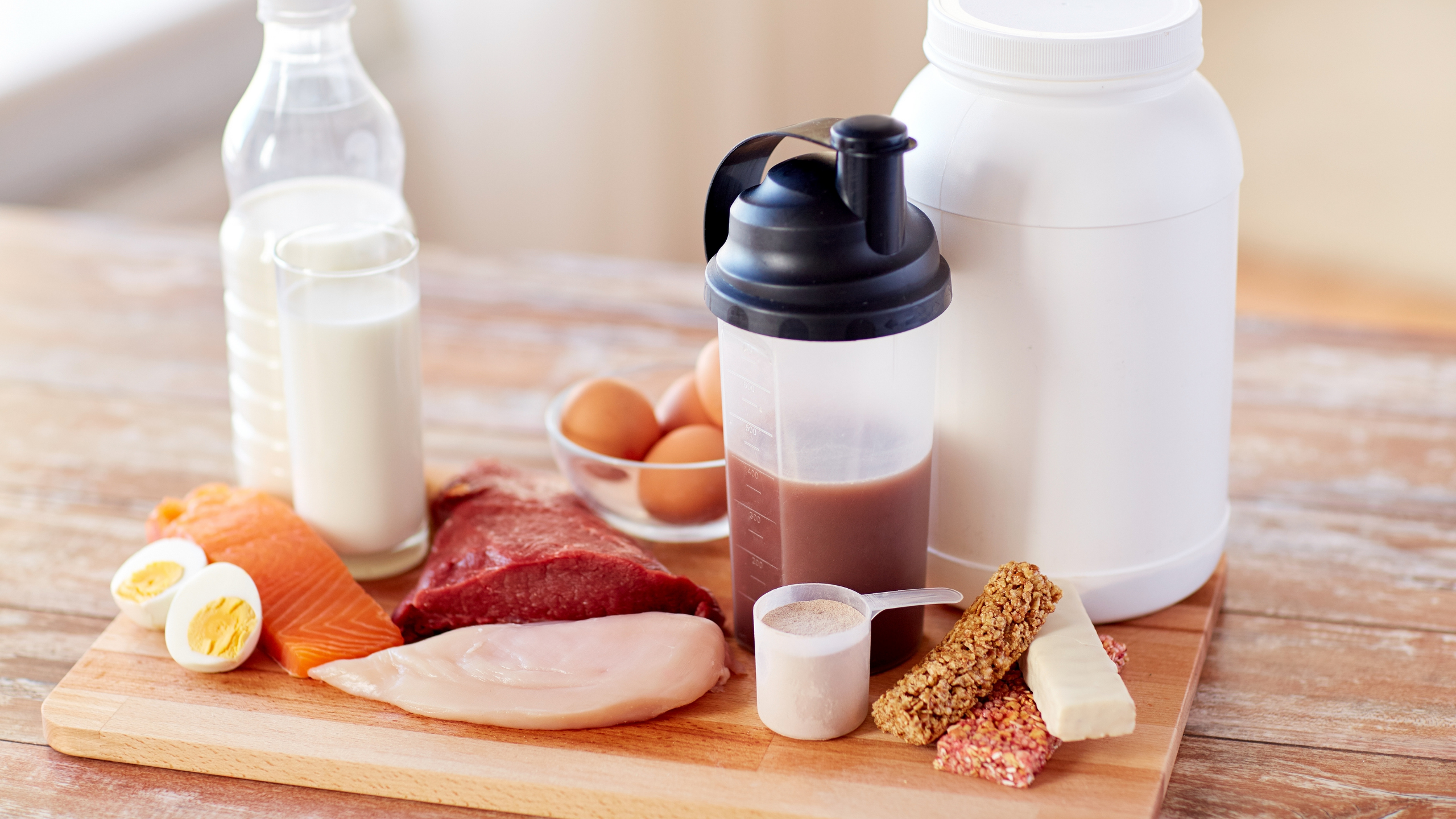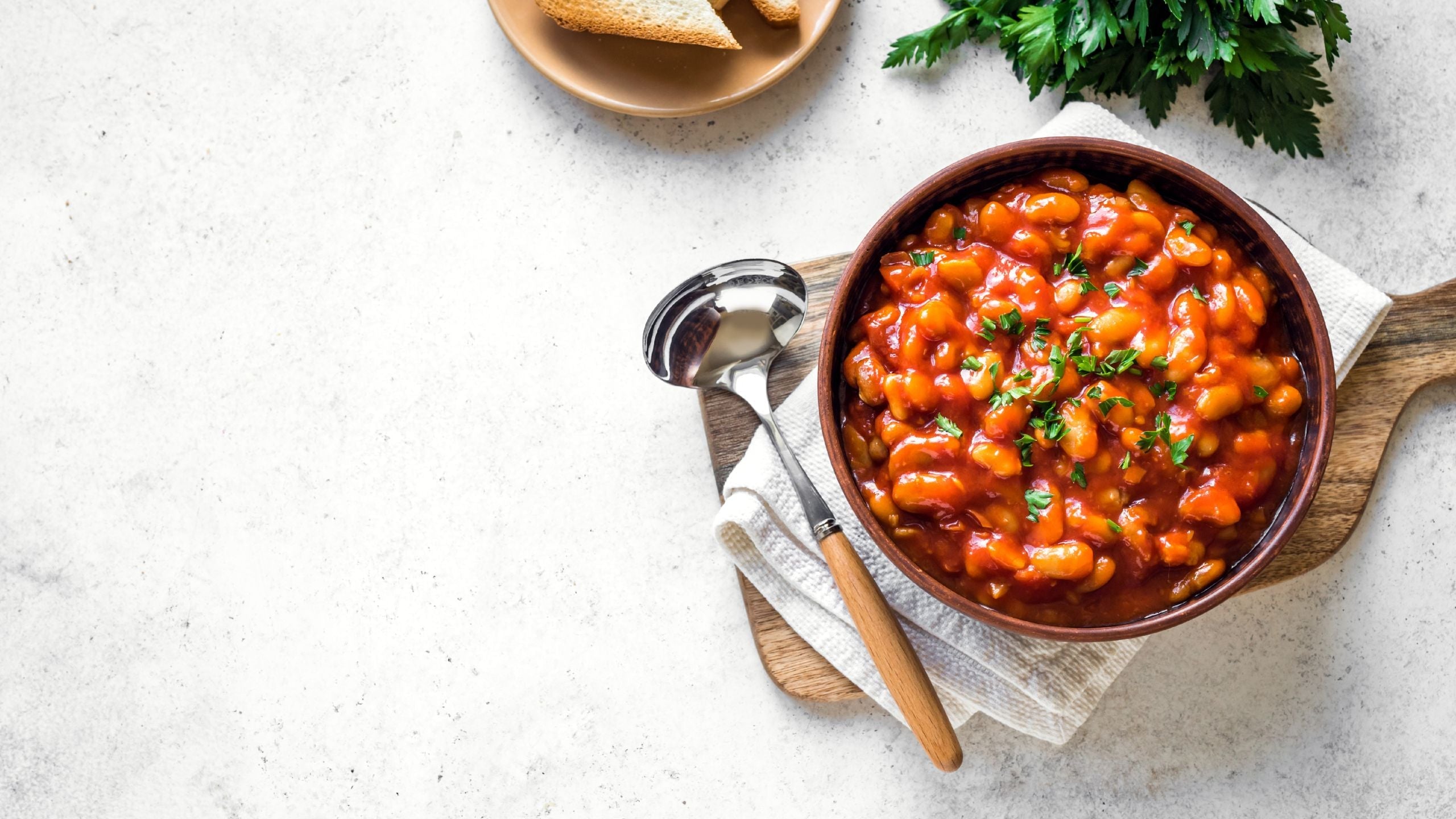Whether you’re looking to lose weight or get more gains in the gym, chances are you have turned to protein to help reach your goals. And for good reason! Protein is one of the most widely talked about macros when it comes to exercise performance, weight management, and recovery–with the science to back it up. Things can get a bit monotonous in the kitchen if lean meat and protein bars make up the bulk of your diet, so we’re sharing some recommendations for high-protein meals and snacks that you can incorporate into your daily diet.
But before we dive into these meal ideas, let’s turn to science to better understand the importance of protein and how much you really need in a day.

The importance of protein
Protein is an essential macronutrient composed of 20 different amino acids, nine of which are considered “essential” because your body cannot produce them, meaning they must come from your diet. These 20 amino acids are considered the primary building blocks of your body since they are found in tissues (including organs, bones, muscles, tendons, cartilage, ligaments, and skin), hormones, enzymes, red blood cells, and more [1].
Protein also plays a role in increased exercise performance, weight management, post-workout muscle protein synthesis, and muscle maintenance during weight loss.
How much protein do you need?
The current RDA is 0.8 g/kg/day for all adults over 18 years of age, including elderly adults over the age of 65 [2]. It’s important to note, however, that the RDA is the amount you need to meet your basic nutritional requirements and prevent illness. Your protein needs will likely be higher if you are physically active, recovering from illness or injury, or are over the age of 65. For example, some studies indicate that people over 65 years old may benefit from intakes of 1-1.2 g protein/kg of body weight/day [3].
If you are an athlete or highly active individual, research shows that you may need 1.2-2.0 g/kg/day, depending on training needs and goals [4]. Experts also suggest that 1.2-1.7 g of protein/kg/day can be beneficial to increase muscle mass [5].
Reasons to eat more protein
While protein is an essential macronutrient, it does more for your health than just boost your gains. Here are some reasons science says you may want to add more protein to your diet.
Improves satiety levels. Studies show that protein’s satiating effects are mostly hormonal, as it can reduce ghrelin (a hunger hormone), boost peptide YY (another hormone that makes you feel full), and stimulate the release of several hormones that activate satiety centers in the brain [6]. This increased satiety can also help with weight management.
Better bone health. Research shows that protein may positively affect bone mineral density since it’s indicated that people who eat a higher protein diet might experience a reduced risk of fractures and osteoporosis compared to those who don’t eat as much protein [7,8].
Lowers blood pressure. Studies indicate that a higher protein intake can lower blood pressure and may reduce risk factors for heart disease [9].
Muscle growth. Studies have found that people who consumed additional protein after weightlifting showed increased muscle size and strength compared to those who didn’t [10].
Recovery after exercise. Since protein helps repair and build muscle, adequate consumption helps speed up recovery, ease soreness, and reduce muscle damage [11].
How much protein should you eat for high protein meals?
If you’re looking to boost your protein intake, science shows that up to 25-30% of your daily calories can come from protein [12]. While this may sound like a steep number, it can be doable with the right nutrition and balanced meals. Here are some of the best high protein meals and snacks to help you reach your macro goals.

How Elo Smart Protein can help you reach your goals
Elo Smart Protein is a personalized protein powder that is designed for anyone who wants to boost recovery and enhance performance. Unlike other custom protein products, Elo Smart Protein uses your goals, health history, workout data, and dietary preferences to craft the right protein blend for you and provide specific protein dosing recommendations after every workout.
Elo Smart Protein is also backed by the latest science to help you recover faster and get the most out of every scoop. Try it out for yourself today!

High protein breakfast
Eggs: Two-egg omelet with veggies of your choice and 1 oz cheddar cheese. On the side, enjoy 1 cup of low-fat Greek yogurt with 1/2 cup of raspberries. Total protein content: 36 g
Smoothie: Recommended serving size of Elo Smart Protein*, ½ cup frozen berries, 1 cup spinach, 1 cup low-fat Greek yogurt, 2 tablespoons peanut butter, and water. Total protein content: ~49 g
High protein pancakes: blend 1 cup oats, 1 banana, 2 eggs, 1/2 cup egg whites, 1 teaspoon baking powder, a pinch of salt and cinnamon, recommended serving of Elo Smart Protein, and 2 tablespoons flax meal. Total protein content: 54 g
*The amount of protein in your Elo Smart Protein blend may differ depending on your goals, wearable data, age, and gender.

High protein vegan breakfast
Smoothie: Recommended serving size of Elo vegan Smart Protein, ½ cup frozen berries, 1 cup spinach, 1 cup plant-based yogurt, 2 tablespoons peanut butter, and water. Total protein content: ~41 g
Cereal: 1 1/2 cups high protein cereal and 1 cup of plant-based high-protein milk of choice. Total protein content: 35 g
Avocado toast: 1 slice of toasted whole grain bread with 1/2 avocado and 1 cup roasted chickpeas. Serve with 1 cup plant-based yogurt on the side. Total protein content: 19 g

High protein low carb breakfast
Cottage cheese bowl: 1 cup cottage cheese, 1 sliced crumbled bacon, 3 slices avocado, and topped with crushed red pepper to taste. Total protein content: 28 g
Omelet: made with 2 eggs and filled with veggies of choice, 1 oz cheddar cheese, and 1 slice of bacon. Total protein content: 22 g

High protein snacks
Protein shake: made with your recommended serving size of Elo Smart Protein and water or high protein milk of choice. Total protein content: ~24 g (number is calculated with water)
Roll-ups: wrap 1 oz slice of cheddar cheese and vegetables inside 1 oz turkey slices. Total protein content: 15 g
Tuna salad dip: dip bell peppers and whole grain crackers into 1 cup of tuna salad. Total protein content: 33 g
Yogurt bowl: top 1 cup of low-fat Greek yogurt with walnuts and an apple. Total protein content: 17 g
Peanut butter celery sticks: Spread 2 tablespoons of high protein peanut butter on celery sticks. Total protein content: 8 g

High protein vegan snacks
Vegan protein bars: you can make these yourself or buy them at the store. Total protein content: ~17 g
Vegan protein shake: made with your recommended serving size of Elo Smart Protein and water or plant-based high protein milk of choice. Total protein content: ~24 g (number is calculated with water)
Roasted edamame: Roast 1 cup edamame in the oven with desired seasonings. Total protein content: 17 g

High protein lunch
Turkey wrap: made with a whole grain wrap, 1 oz turkey slices, 1 oz cheddar cheese, 2 slices avocado, veggies of choice, and 2 tablespoons Greek yogurt. Total protein content: 17 g
Chicken salad sandwich: add 1/2 cup chicken salad in-between two slices of whole grain bread. Total protein content: 15 g
Tuna bowl: add 1/2 cup cooked quinoa, 1/4 cup chickpeas, and 2 oz canned tuna to a bowl. Top with 1 tablespoon of feta cheese and a drizzle of red wine vinaigrette. Total protein content: 29 g
Salmon salad: made with 6 oz cooked salmon, 1 1/2 cups kale, 1/4 cup chickpeas, and a drizzle of lemon vinaigrette. Total protein content: 37 g

High protein dinner
Meatballs: made with 1/2 pound lean ground beef, 1 egg, 1/4 cup breadcrumbs, and Mediterranean seasonings of choice. Drizzle with a yogurt tzatziki sauce for extra protein. Total protein content: 56 g (number calculated without yogurt tzatziki sauce)
Protein chili: made with 1 pound lean ground turkey, 2 canned beans of choice, 1 small sweet potato, 1 cup quinoa, 1 can diced tomatoes, and chili seasoning. Top with shredded cheddar cheese. Total protein content: 125 g (number calculated without cheddar cheese)
Roasted tofu: Press and chop 1/2 cup extra firm tofu, bake at 400 F for 20 min, and drizzle with a miso dressing. Serve with 1/2 sweet potato and 1 cup peas. Total protein content: 30 g
Salmon bowl: add 6 oz cooked salmon, 1/4 cup edamame, veggies of choice (like cucumber and carrots), 1/4 avocado, and 3/4 cup cooked rice to a bowl. Drizzle with teriyaki sauce. Total protein content: 39 g

High protein desserts
Nice cream: Blend a frozen banana with half of a scoop of Elo Smart Protein, a tablespoon of peanut butter, a tablespoon of cacao powder, and 1/2 cup high protein milk of choice. Total protein content: ~28 g
Chia seed pudding: mix together 2 tablespoons chia seeds, recommended scoop of Elo Smart Protein, 1/2 cup high protein milk of choice, and 2 tablespoons liquid sweetener of your choice. Refrigerate for at least 3 hours, top with fresh fruit, and enjoy! Total protein content: ~37 g
Dairy bowl. Add 1 cup low fat Greek yogurt to a bowl and top with a fruit of your choice. If you want a little more sweetness, drizzle a little bit of honey on top. Total protein content: 17 g
Summary
Protein is an essential macronutrient that has been shown to help with weight maintenance, muscle gain, exercise performance, and satiety. However, things can get monotonous if you only consume lean meat and energy bars as your protein sources. High-protein meals and snacks such as salmon bowls, chia pudding, protein chili, turkey wraps, and chickpea toast are all balanced meals that provide high amounts of protein and other important nutrients for overall health.
Disclaimer: The text, images, videos, and other media on this page are provided for informational purposes only and are not intended to treat, diagnose or replace personalized medical care.

Share:
The ultimate guide to post-workout nutrition
Issue 47: Is protein the key to better performance?